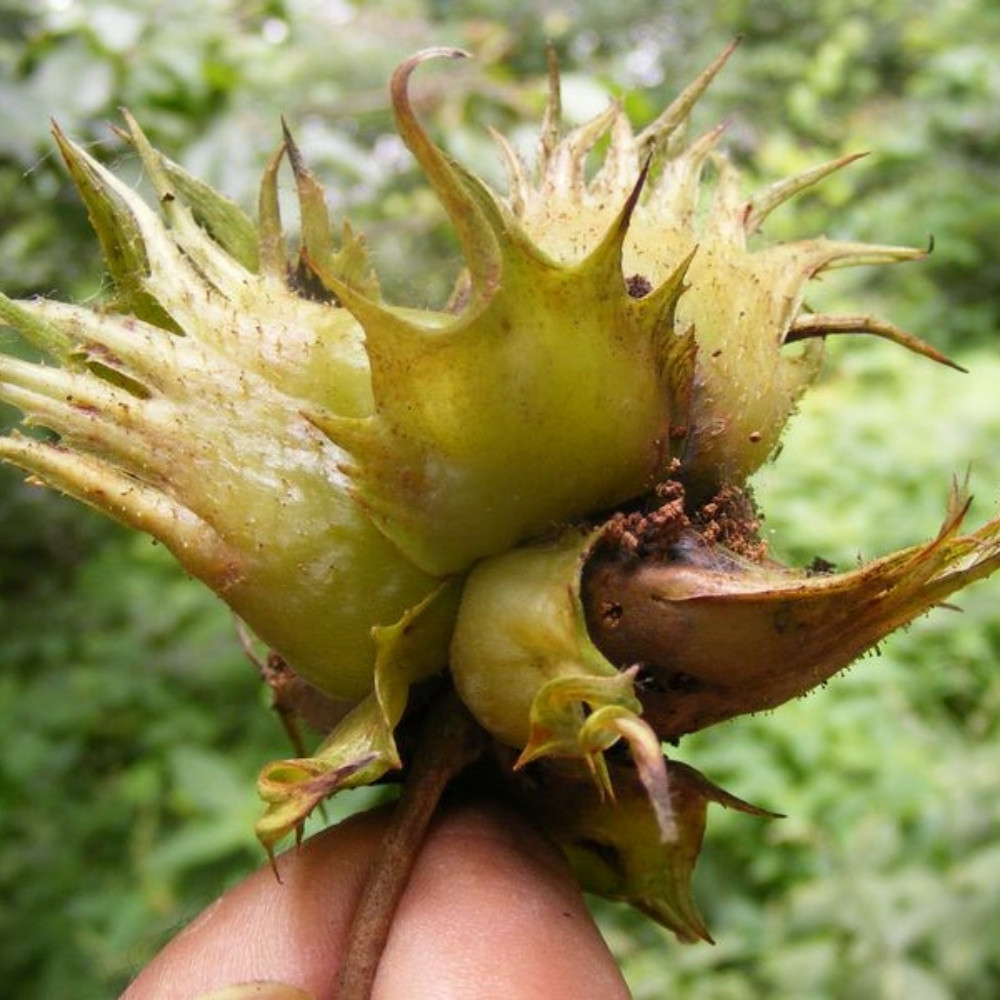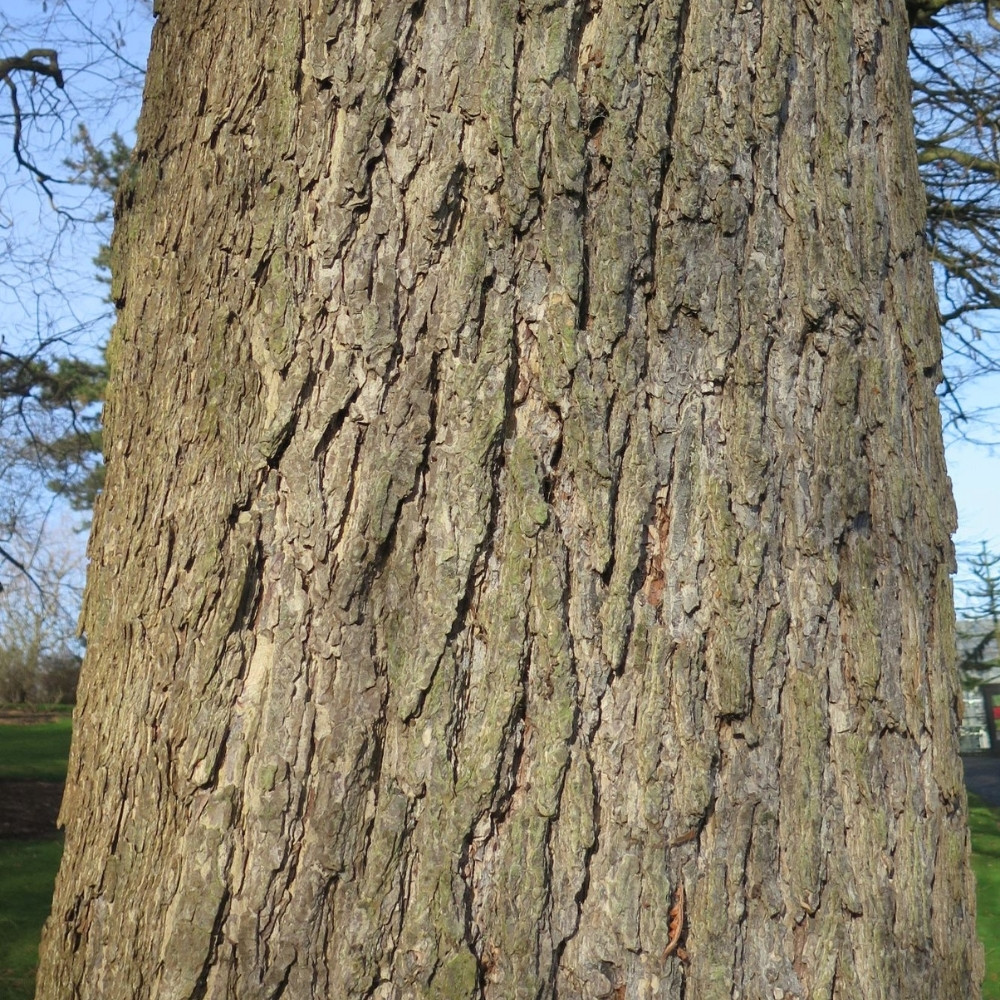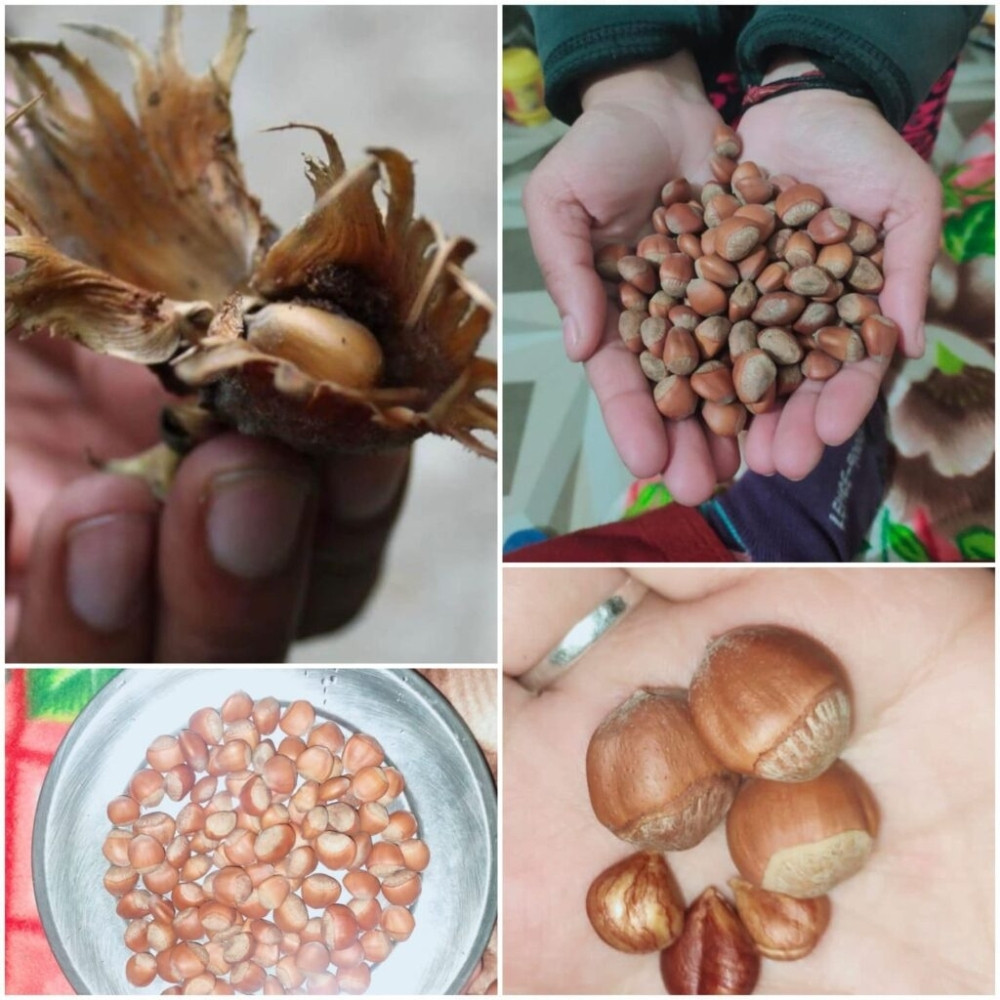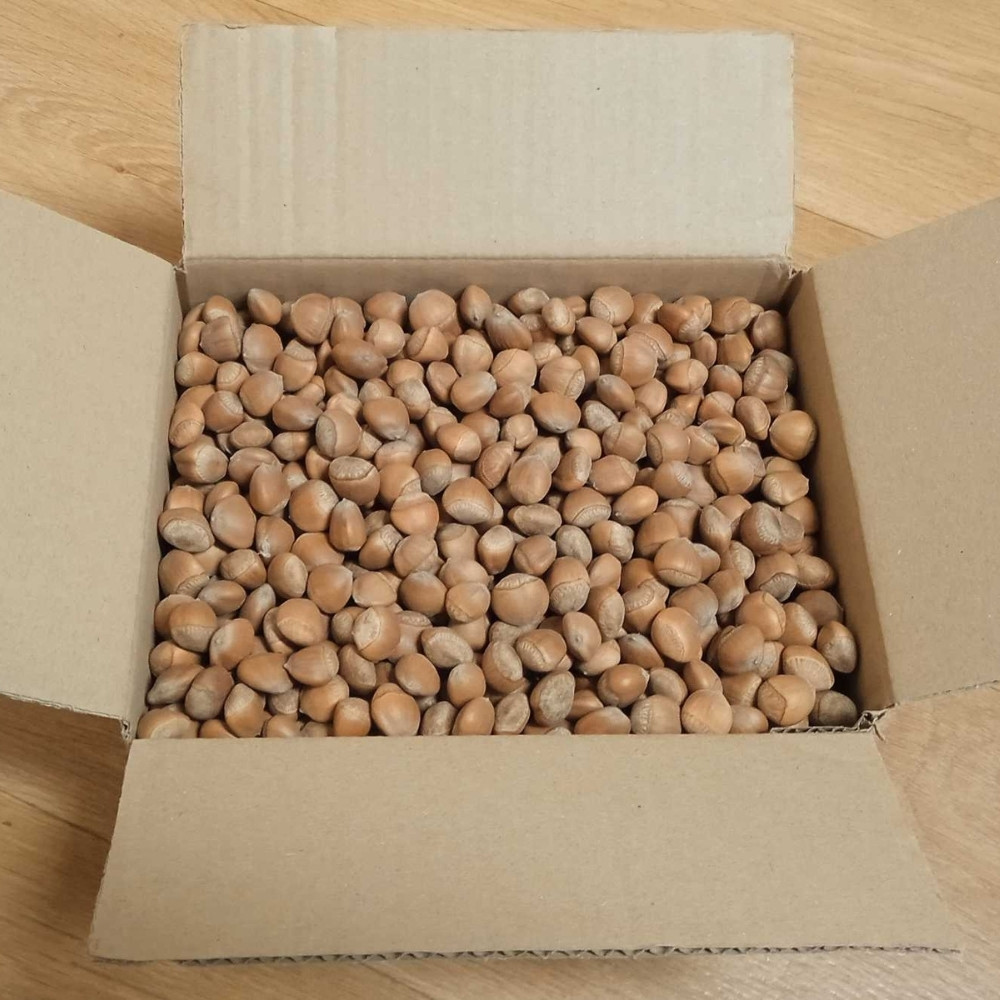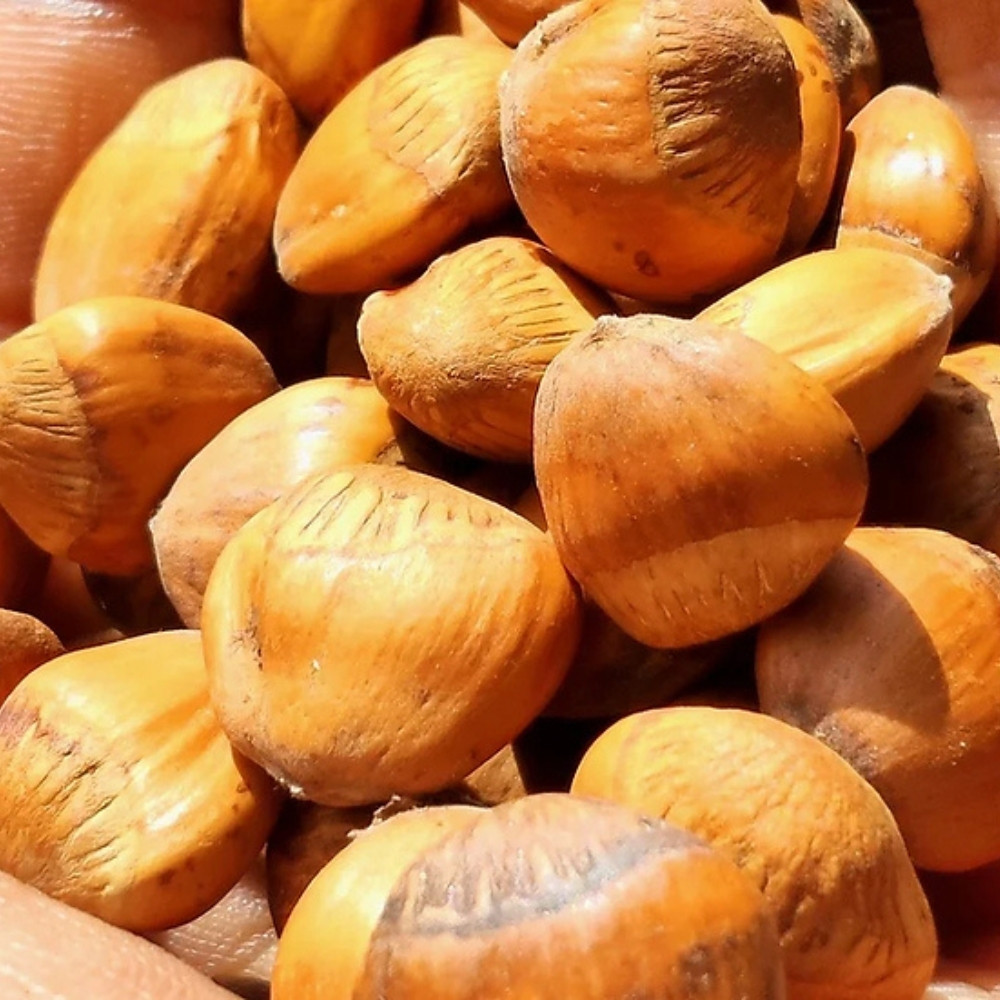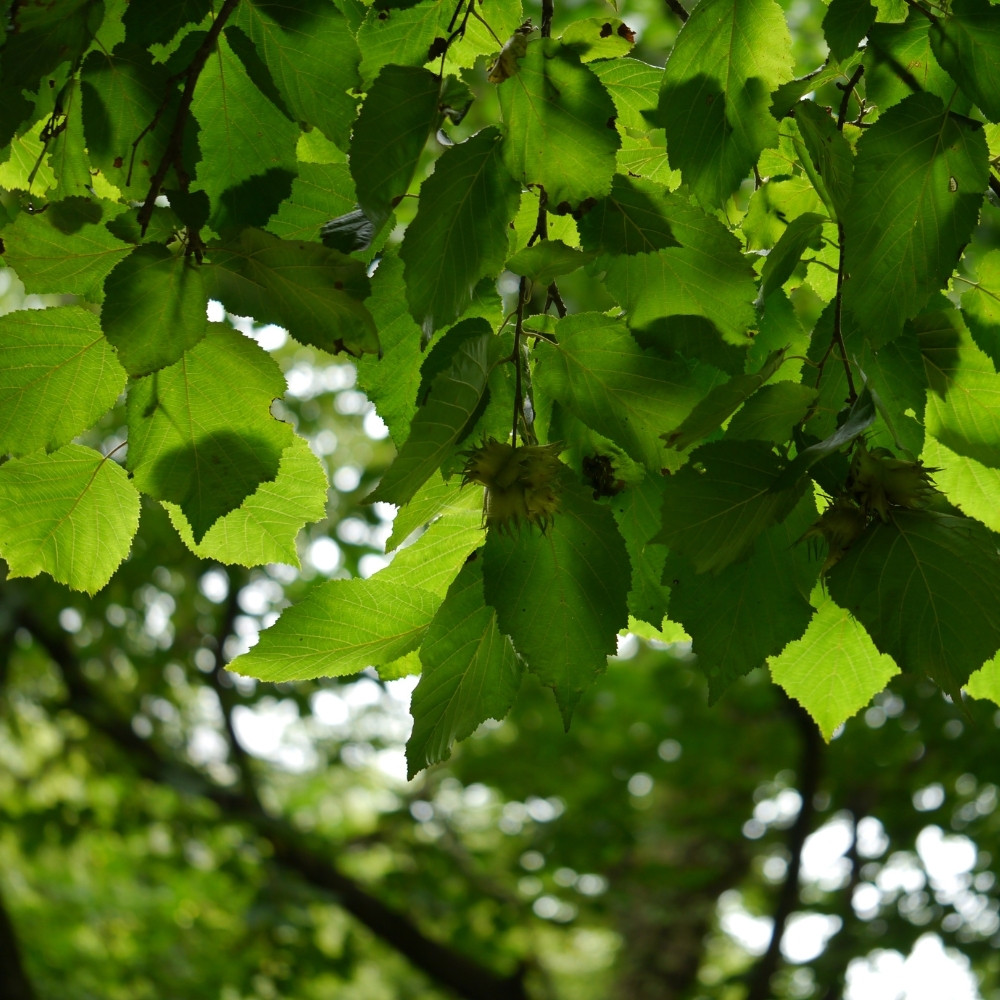Himalayan Wild Hazelnut Seeds - Corylus jacquemontii, Thangi, Kavro Nuts
Overview:
Corylus jacquemontii, commonly known as Himalayan Wild Hazelnut, Thangi, or Kavro Nuts, is a deciduous shrub native to the Himalayan regions of India, Nepal, and Bhutan. Known for its adaptability to high altitudes and challenging climates, this species is a vital part of the ecosystem, offering food and shelter for wildlife. Its nuts have been traditionally harvested by local communities for their rich taste and nutritional value, making it an essential wild crop in mountainous regions.
Characteristics:
The Himalayan Wild Hazelnut grows as a multi-stemmed shrub or small tree, reaching a height of 3–5 meters. Its leaves are broad, ovate, and serrated, with a vibrant green color. The plant produces round to oval nuts encased in a hard shell surrounded by a leafy husk. These nuts are small, typically 10–15 mm in diameter, and ripen from late summer to early autumn. The plant thrives in rocky soils and is well-suited for high-altitude environments between 2,000 and 3,500 meters.
Taste and Nutritional Benefits:
Himalayan Wild Hazelnuts are prized for their rich, nutty flavor and crunchy texture. Packed with healthy fats, protein, and essential vitamins such as vitamin E, these nuts are an excellent source of energy. They also contain antioxidants and minerals like magnesium and manganese, supporting heart health, brain function, and overall wellness.
Cultivation Guidelines:
• Climate: Best suited for cool, temperate climates with well-drained, fertile soils.
• Planting: Stratify seeds for 2–3 months at temperatures of 1–4°C to improve germination rates. Sow seeds directly into prepared soil or seed trays at a depth of 2–3 cm.
• Watering: Requires moderate watering, especially during the germination and early growth stages. Mature plants are drought-tolerant.
• Growth Period: This slow-growing species can take 4–6 years to reach maturity and begin producing nuts, but its hardy nature makes it low-maintenance and rewarding.
Applications:
Himalayan Wild Hazelnut has diverse uses. The nuts are consumed raw, roasted, or used in desserts, snacks, and traditional recipes. Its high-fat content makes it a valuable ingredient for oils and confectionery. Beyond its culinary applications, the shrub is often planted for soil stabilization and reforestation, contributing to ecological restoration in mountainous terrains.
Seed Quality and Packaging:
Our Himalayan Wild Hazelnut seeds are freshly harvested and carefully selected to ensure optimal germination rates. Packaged in eco-friendly, moisture-resistant pouches, they are designed to maintain freshness and viability during storage and transport.
Shipping Information:
Orders are processed within 1–2 days, with delivery typically completed within 1–2 weeks. We ship both within India and internationally, ensuring these unique seeds reach gardeners worldwide.
Grow this resilient and versatile plant with premium seeds from Deodar Seeds.
Overview:
Corylus jacquemontii, commonly known as Himalayan Wild Hazelnut, Thangi, or Kavro Nuts, is a deciduous shrub native to the Himalayan regions of India, Nepal, and Bhutan. Known for its adaptability to high altitudes and challenging climates, this species is a vital part of the ecosystem, offering food and shelter for wildlife. Its nuts have been traditionally harvested by local communities for their rich taste and nutritional value, making it an essential wild crop in mountainous regions.
Characteristics:
The Himalayan Wild Hazelnut grows as a multi-stemmed shrub or small tree, reaching a height of 3–5 meters. Its leaves are broad, ovate, and serrated, with a vibrant green color. The plant produces round to oval nuts encased in a hard shell surrounded by a leafy husk. These nuts are small, typically 10–15 mm in diameter, and ripen from late summer to early autumn. The plant thrives in rocky soils and is well-suited for high-altitude environments between 2,000 and 3,500 meters.
Taste and Nutritional Benefits:
Himalayan Wild Hazelnuts are prized for their rich, nutty flavor and crunchy texture. Packed with healthy fats, protein, and essential vitamins such as vitamin E, these nuts are an excellent source of energy. They also contain antioxidants and minerals like magnesium and manganese, supporting heart health, brain function, and overall wellness.
Cultivation Guidelines:
• Climate: Best suited for cool, temperate climates with well-drained, fertile soils.
• Planting: Stratify seeds for 2–3 months at temperatures of 1–4°C to improve germination rates. Sow seeds directly into prepared soil or seed trays at a depth of 2–3 cm.
• Watering: Requires moderate watering, especially during the germination and early growth stages. Mature plants are drought-tolerant.
• Growth Period: This slow-growing species can take 4–6 years to reach maturity and begin producing nuts, but its hardy nature makes it low-maintenance and rewarding.
Applications:
Himalayan Wild Hazelnut has diverse uses. The nuts are consumed raw, roasted, or used in desserts, snacks, and traditional recipes. Its high-fat content makes it a valuable ingredient for oils and confectionery. Beyond its culinary applications, the shrub is often planted for soil stabilization and reforestation, contributing to ecological restoration in mountainous terrains.
Seed Quality and Packaging:
Our Himalayan Wild Hazelnut seeds are freshly harvested and carefully selected to ensure optimal germination rates. Packaged in eco-friendly, moisture-resistant pouches, they are designed to maintain freshness and viability during storage and transport.
Shipping Information:
Orders are processed within 1–2 days, with delivery typically completed within 1–2 weeks. We ship both within India and internationally, ensuring these unique seeds reach gardeners worldwide.
Grow this resilient and versatile plant with premium seeds from Deodar Seeds.
Himalayan wild hazelnut, Corylus jacquemontii, Thangi, Kavro nuts - 5
- Product Code: NUT5
- Availability: In Stock
₹429.00



